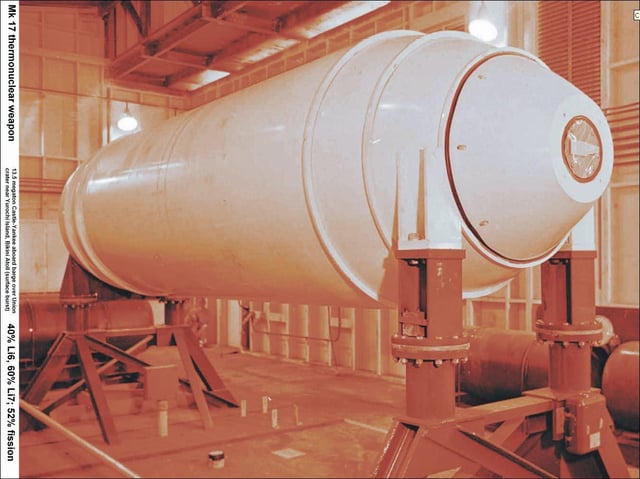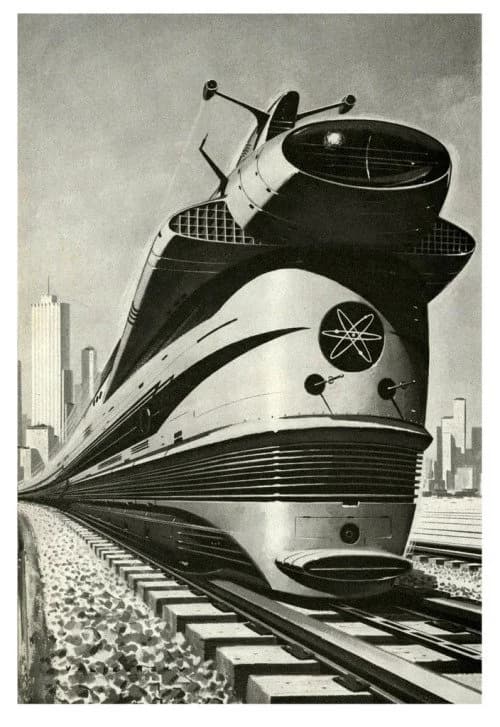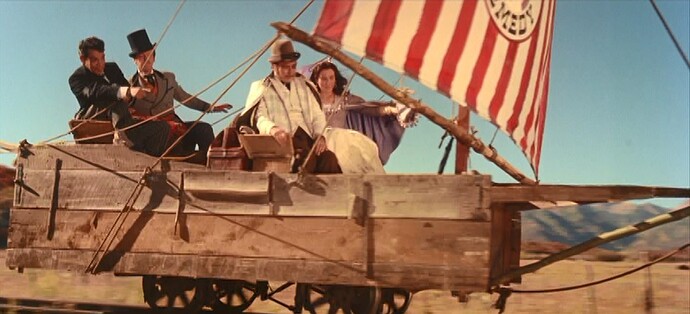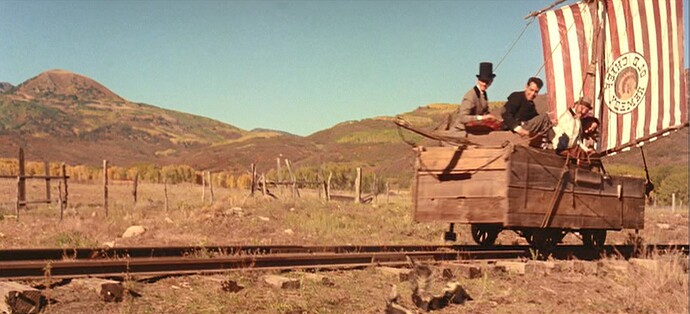WTF?! BOOOOOOOOOOOOOOOOOOOOOOOOOOOOOOOM!!!
Correction to Pennytrains:
Lithium’s involvement in H-bombs comes from the 6Li(n,T)4He reaction (“T” being Tritium) to generate Tritium for the DT reaction. The Deuterium is usually combined with Lithium to make Lithium Deuteride. The Ivy Mike device used cryogenic Deuterium and Tritium, which is impractical for a weapon as the cryo-cooling gear is heavy and bulky along with Tritium having a ~12 year half life.
I wasn’t going to say it, but I’m glad you did.
Lithium in batteries is a fire hazard, a chemical exothermic reaction.
The reactions of lithium deuteride in a secondary are fusion reactions, FAR more exothermic but not occurring accidentally.
Interestingly enough she was right that it doesn’t have to be pure lithium-6 in the deuteride; in the flux from the primary you can get a (n,2n) reaction in plain old lithium-7, after which it enthusiastically parties like the lighter isotope. See some of the Castle shots.
Just a little note: Jughead. ![]()
(cough) Castle Bravo (cough) Just a factor of 4 or 5 underestimate of yield, the (n,2n) reactions provided a lot of neutrons to party with.
Alkali metal fires are a challenge to put out. The recommended method for reasonably pure metals is to use sand (preferably dry) to smother the fire. Lithium battery fires are more of a challenge as the reagents are in the battery itself. I was encouraged about the prospects for battery locomotives when seeing projections for Li-ion specific energy, but issues with battery fires have cooled my enthusiasm.
There’s a battery energy storage plant being built a few blocks from where I work - the plant is supposed to be using LFP batteries which should have a lower fire hazard. LFP batteries have about half the specific energy (i.e. w-hrs/lb) of Li-ion, but that’s not a big issue for a stationary application.
Not that bad – just two and a half times.
Much more fun was Runt, which ran away to just shy of 7MT, and Yankee, which was going to be the first Jughead shot but was replaced by a ‘somewhat modified’ Runt which neatly produced something like 13.5MT.
I have still not gotten a straight answer why they kept testing the dry bombs after observing Bravo… I guess that out there in the Marshalls it was 'run (or should I say runt) what ya brung…
I didn’t wish to get so technical as to describe how lithium 6 and lithium 7 interact in a fission environment
Penny, it’s a fusion environment… ![]()
All this talk about fusion is giving me a splitting headache… ![]()
But splitting is fission, Erik…
I know - figure I’d change the subject - then split!
Yes… as the WOPR/Joshua pointed out, sometimes the right way to have these discussions is the same as the right way to use large numbers of fission-fusion (or triple-deckers, long may they sleep!) strategically…
… is it on topic to talk about discussions about trains that rely largely on wind power?
That one probably doesn’t choo. The closest thing to what you want would be the Alco A-100 as illustrated by Howard Fogg with a set of Niagara-like Timken roller side rods. Distressingly, I can find no online version to post here, but I had a copy at home and will see if I can scan or shoot it.
Didn’t Phileas Fogg have a wind sail powered train car in the old movie Around the World in 80 Days?
I remember there being a wind-powered sled or something similar. I don’t remember it being on the rails, though.
Oh, I never saw the movie–maybe I should. I’ve just read the book. I do think that (somewhere) I might have a graphic novel, though.
If you want to see what happens when you get say 200 tons of lithium batteries going up at once. Google the Morris Illinois lithium battery fire and cringe. If the wind had been in a different direction the smoke plume might have reached Chicago 60 miles away.
Yes! In the book it was basically a lifeboat on skis.




